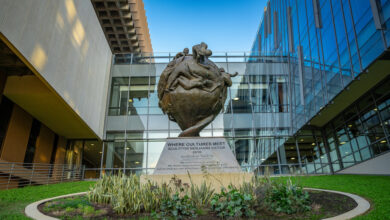
The past month has been hectic and stressful for everyone at California State University, Dominguez Hills (CSUDH)–but maybe no one has been as consistently busy as the hard-working technology teams who have been transitioning campus operations online during the COVID-19 outbreak.
As the crisis rapidly escalated, the IT and Academic Technology teams threw themselves into the task of moving everything from art classes to financial aid online. The successful–and speedy–results of their efforts speak to their talents, as well as to their dedication to the Toro community.
Reza Boroon is the director of the academic technology department, which was tasked with transitioning faculty and students from face-to-face to remote instruction. They provided training and technical support to professors and students throughout the process.

Boroon says that the speed at which events unfolded caused the most problems. “Providing training and support to those who weren’t familiar with online instruction or web conferencing tools in such a short time period was our biggest challenge,” he says.
Currently, all Academic Technology staff are working remotely from home. “We were able to move our support and training to a remote environment with no technical issues,” says Boroon, who was pleasantly surprised by how smoothly the transition went.
With the transition to remote instruction now complete, Boroon’s team is busy providing virtual Blackboard and instructional technology support to faculty and students on an as-needed basis.
Meanwhile, the CSUDH IT team has been hard at work making sure that campus technology is up to the challenge of the online transition.
“We made a very rapid switch to a remote platform,” says Bill Chang, associate vice president of enterprise applications and digital transformation. “That meant we had to work on laptop loans, VPN connections, and remote desktops. We did everything we could to support changing business processes to a remote model.”
The constantly changing nature of the crisis has been its own challenge. Just last week, the on-campus Toro Computer Lab was shuttered, which forced the IT team to quickly develop a new distribution model for loaning laptops to students, faculty, and staff in need.
With the transition to remote instruction and telecommuting complete, the IT team continues to try and fine-tune the systems they have in place. The IT Help Desk is still up and running, with staff working remotely to troubleshoot problems as they pop up.
As CSUDH faculty, staff, and students adapt to the new world of online instruction and telecommuting, the university’s technology teams will continue to provide technical and logistical support. “We’re continuously looking for solutions that will support our telecommuting workforce,” says Chang.









